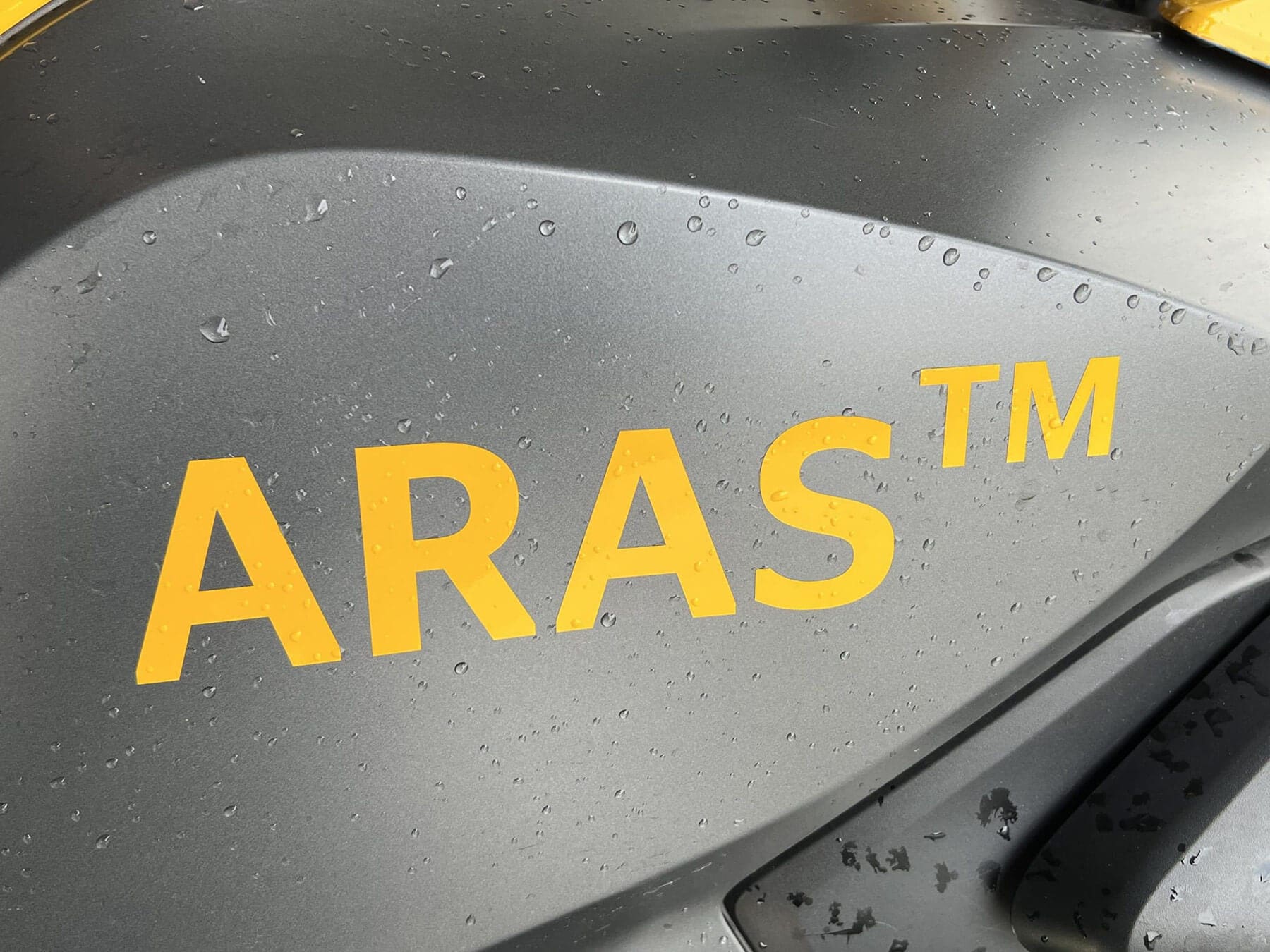With its various rider assistance functions, based on radar and camera sensorics, we present our ARAS™ demo bike. Our team uses the motorcycle to develop and test two-wheeler-specific functions within the framework of ARAS™ (Advanced Rider Assistance Systems).
On the test track, Christoph Falk-Gierlinger (Managing Director of CES GmbH) got to know the various functions, that can all provide improved safety for motorcyclists on the road, no matter whether they are camera- or radar-based.
For the purpose of the demonstration and comparability of function performances between radar and camera, individual warning indicators (HMI) are available.
Among others, these functions are available on the bike: Adaptive Cruise Control (ACC), Blind Spot Detection and Lane Change Assist (LCA), and a Forward Collision Warning.

Once activated, Adaptive Cruise Control (ACC) helps motorcyclists to maintain a safe riding distance to a vehicle ahead. Similar to the application in the car, the radar sensor can determine the path to the next moving car in their own lane, but also takes into consideration the motorcycle’s very specific dynamics like leaning and overall dynamics. This function is particularly useful to the rider while travelling on longer distances on motorways at varying speeds. If the vehicle ahead of the motorcycle accelerates, the motorcycle automatically accelerates as well up to the set speed.
The same procedure applies to braking. If the vehicle in front slows down, the motorcycle smoothly reduces its cruising speed as well. In all these cases, Adaptive Cruise Control ensures that the motorcycle keeps a constant time gap and therefore reduces strain on the rider so there’s all the more focus left for the exciting part of motorcycling – the twisty and scenic routes.
Due to the helmet and shaking side mirrors, motorcyclists often experience a wider blind spot to the rear sides of the bike than the one for drivers in cars. This makes the following function even more relevant: The Blind Spot Detection is activated when an object is located in the immediate blind spot area of the motorcycle. A set of warning LEDs lights up in the rear-view mirror of the motorcycle to indicate the presence of a vehicle in the adjacent lane. In addition, the Lane Change Assistant (LCA) plays a role in making motorcycle riding safer on motorways, where high relative speeds between traffic participants often occur. The lane change assistant detects a fast-overtaking vehicle and warns the motorcyclist by a fast-flashing warning to indicate the presence of the vehicle.

The Forward Collision Warning is the next step on the demo motorcycle. In case of an impending collision with a vehicle ahead, this function can warn the rider and indicate to start braking immediately. By measuring the distance and difference in speed, the radar sensor can determine a collision probability. If a certain criticality is reached, the radar can trigger a warning marked by a bright red flashing array of LEDs.
In summary, the ARAS™ demo bike is a great way to experience these functions first-hand.
Find out more: Link





